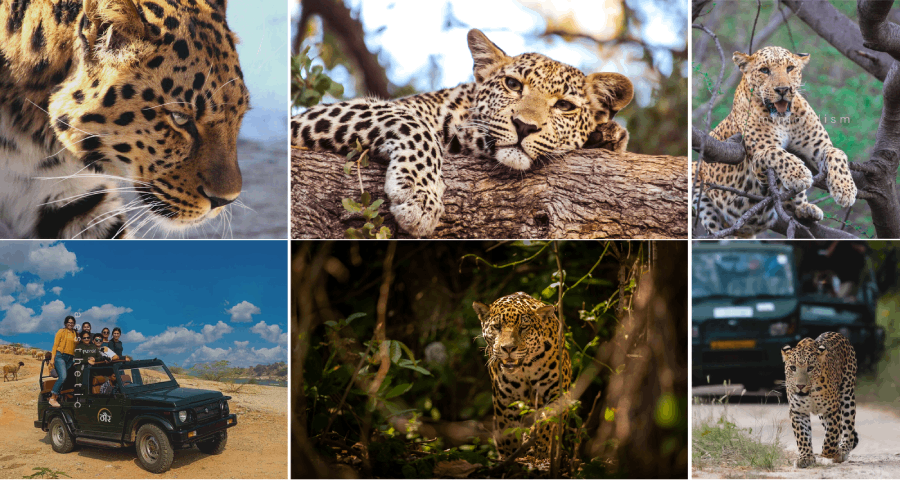Flora
Amagarh Leopard Reserve boasts a captivating landscape with Mountain valleys, sharp cliffs, Grasslands and a tranquil forest. The tree life here is mainly of hardy trees which are apt at surviving with less rain water, growing in rocky soil etc. All built up for the life in a dry deciduous forest. The forest floor and mountain base is covered mainly with Indian Babul(Acacia Nilotica), Kumtaa(Acacia Senegal), Indian Elm or Chaleel ( Holoptelea Integrifolia), Ber or Indian Jujube(Ziziphus Mauritiana), Dhak (Buteo Monosperma), Salar (boswellia Serrata), Guggal (Commiphora Wightii), Khejri (Prosopis Cineraria) and more. The entire mountain ranges are majorly dominated by one single species “Dhok”(Anogeissus Pendula), which give color to the Aravalli mountain range. The reserve is undergoing a afforestation program where more fruit bearing native trees like Shahtoot, Pilkhan are planted.
Fauna
Amagarh Leopard Reserve is home to the majestic Leopard, the Apex predator here. Unlike its nocturnal counterparts, the leopards here are are diurnal and crespuscular making them easily visible during the day. Over 20 Mammal species, 160 Bird Species, 20Reptile Species are recorded in Amagarh. Mammals seen here are The Striped Hyena, Golden Jackal, Desert Fox, Rusty Spotted Cat, Jungle Cats, Porcupine, Indian hedhehog, Palm civets, Spotted Deer, Sambhar, Neel Gai, Desert Jerbil etc. Over 15 Species of Snakes, 2 Monitor Lizards, 2 Skinks, 2 Lizard species and a variety of bird species are recorded here making it a paradise for nature and leopard enthusiasts alike.







